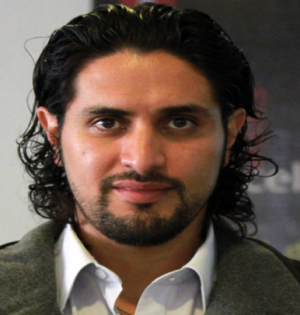LASINAC
Acoustic Numerical Simulation Research Laboratory "LASINAC"
Director

Dr. José Francisco Lucio Naranjo
Full-Professor of EPN
ORCID iD: orcid.org/0000-0003-2578-1950
Team
Dr. José Francisco Lucio Naranjo
Eng. Paúl Tinizaray
MSc. Daniel Sanaguano
Interns
Bolivar Roman
Edison Sanango
Juan Pablo Rodríguez
Publications
- Guerra A., Homero A., Paz-Arias H, & Lucio-Naranjo, J. F. (2015). Fine-Tuning Aplicado a una Red Neuronal Convolucional para un Detector de Obstáculos en un Entorno Externo.
Submitted Patents
- “SISTEMA DE NAVEGACIÓN ASISTIDA A TRAVÉS DE RECONSTRUCCIÓN TRIDIMENSIONAL Y REALIDAD VIRTUAL ACÚSTICA EN TIEMPO REAL”. International Patent Classification - PCT. A61H3/061; A61H3/068.
Projects executed so far
Assisted-Navigation for impaired people through Acoustic Virtual Reality, proximity sensorial sensors, and Computer Vision. 2015
This research project encompasses the development of an ETA (Electronic Travel Aid) prototype able to assist visually impaired people in detecting obstacles and warning them through 3D sound reproduction. The core of this project is the generation of 3D sound reproduction based on the concept of auralization. The auralization mainly consists of synthesizing a sound that can stimulate the listener in such a way that produces a sensation of acoustic immersion in a virtual environment (I.e. Acoustic Virtual Reality - AVR). Among other things, auralization also involves the fixed placement of the virtual sound sources in random locations. In this project, the AVR will be achieved through modeling and computational simulation of propagation of the acoustic wave in virtual environments to generate the Binaural Impulse Responses (BIRs). The prototype also acquires the obstacle position and synthetizes a tridimensional sound to alert the user, and thus avoid safety the obstacle. To validate the good performance of the prototype in terms of accuracy and applicability, several numerical and in-situ experiments will be done.
Acoustic Virtual Reality applied to improvements in safety, comfort, and environmental quality. 2016
The aim of this project is the development and validation of computational intelligence techniques for the generation of Acoustic Virtual Reality (AVR) to be applied in safety improvements, comfort, and environmental quality. To provide a realistic experience in AVR, the efficient and rapid generation of efficient Binaural Impulse Responses (BIRs) is the key. In this sense, the Artificial Neural Network (ANN) approaches are suitable to generate BIRs because reduced the processing time, after training, with respect to the classic method based on signal processing. In addition, a software-based on numerical simulation models will be developed by the lab team considering the environmental influence in acoustic modeling. Both, the simulation software and the intelligent technique to generate BIR will be validated by experiments using the equipment acquired by the lab (e.g. dummy head, precision microphones, omnidirectional sound sources, etc.). The results obtained by this work may be applied in environmental quality optimization of the environmental quality of public schools in the city of Quito, based on the study of the intelligibility of speech in classrooms.




